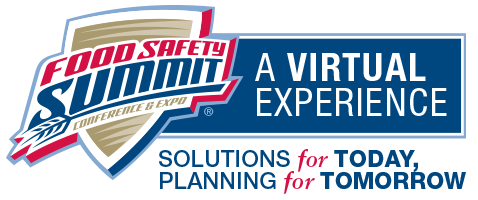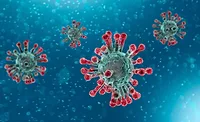2020 STATE OF THE INDUSTRY
State of the Industry in Food Safety: Training & Certification
FSMA requirements and ongoing food safety plan due diligence dictate regular training and certification for key organizational leads.

Establishing a sound, vetted, and proven food safety plan is a hallmark of any company working across the food industry, from the farm to the point of purchase at retail or foodservice. However, those food safety plans are far from static and require ongoing analysis and potentially periodic adjustment to align with federal guidelines and industry best practices. Individuals who manage and implement food safety plans across agriculture, food distribution, food processing, retailing, and foodservice also require training and certification on an ongoing basis in order to stay abreast of vital food safety best practices and official regulatory industry guidance.
Food safety plan updates
Per FDA, food safety plans require analysis and updating at least every three years, or in the event of an operational process change.
Food Safety Summit on Demand

"Implementation of Preventive Controls for Human Food and Other FSMA Rules: Where Are We Today?"
Presenters:
- Deb Kane, Corporate Director for Food Safety and QA, J&J Snack Foods Corp.
- Steven Mandernach, Executive Director, Association of Food and Drug Officials
- Donna Schaffner, Associate Director, Food Safety, QA and Training, Rutgers University Food Innovation Center
- William Lachowsky, Safe Food Canada
"Practice Improves Performance—Internal Audits for Food Processors"
Presenters:
- Kara Baldus, Food Safety Program Manager, Hydrite Chemicals
- Joseph Meyer, Lead Global Microbiologist, Kerry Inc.
As noted in FDA’s “Hazard Analysis and Risk-Based Preventive Controls for Human Food: Draft Guidance for Industry,” food safety plans should consist of the primary documents in a preventive controls food safety system to provide a systematic approach to identifying food safety hazards that require control measures to prevent or minimize the likelihood of foodborne illness or injury. It contains a collection of written documents describing procedures to help ensure food safety during manufacturing, processing, packing, and holding. Documentation should include:
- Hazard analysis
- Preventive controls
- Monitoring procedures and records
- Corrective action procedures and records
- Preventative controls validation
- Verification records
- Recall plan
Any individual central to the food safety plan across their organizations must complete requisite training and certification on a regular basis. This includes the preventive controls qualified individual who develops the food safety plan.
Current priorities
The 2011 Food Safety Modernization Act (FSMA) serves as the basis for much of the necessary food industry training and certification today related to food safety plans, and the industry continues to implement core FSMA tenets.
“FSMA implementation at all levels continues to present some training challenges,” says Steven Mandernach, executive director, Association of Food & Drug Officials, York, PA, and one of the presenters of the 2020 Food Safety Summit session, “Implementation of Preventive Controls for Human Food and Other FSMA Rules—Where Are We Today?” He notes the industry is now moving into full implementation of FSMA’s Intentional Adulteration rule, and that the Produce Safety rule is nearing full implementation, which includes continued training challenges—particularly as the rule applies to smaller farmers. “Further, in the last six months, the entire food industry has had a crash course on virus control with COVID-19 dramatically impacting their operations and employees.”
Deb Kane, senior director, food safety, quality and regulatory, J&J Snack Foods Corp., Pennsauken, NJ, is a fellow presenter of the “Implementation of Preventive Controls for Human Food and Other FSMA Rules—Where Are We Today?” Food Safety Summit session. “We are always working to drive continuous improvement in food safety,” she says. “Food safety documents are living documents, meaning they are dynamic and continually updated or edited as new information becomes available.” The session will address key aspects of food safety plans. “My presentation this year will address validation of Critical Control Points (CCPs), Preventive Controls (PCs) and Prerequisite Programs (PRPs), as they are the basis for an effective food safety system.”
Kane notes the following areas of food safety that dictate updates or new levels of training and certification across the food industry:
- Advanced levels of developing food safety plans and flow diagrams, which include rework and inputs
- Conducting a hazard analysis
- Incorporating severity and likelihood into overall risk scores
- Writing a justification that supports the overall risk score
- Identifying CCPs and PCs
Donna Schaffner, associate director, food safety, QA and training, Rutgers University Food Innovation Center, Piscataway, NJ, and a fellow presenter of “Implementation of Preventive Controls for Human Food and Other FSMA Rules—Where Are We Today?” Food Safety Summit session, notes the session addresses gaps between where companies need to be, in terms of FDA-required trainings, and where they actually are. It also addresses:
- How some certification bodies have been slow to address the lack of an in-person presence in food processing facilities
- How companies should respond to these additional pressures in order to keep in compliance with food safety regulations
- How the COVID-19 pandemic has disrupted training programs
COVID-19 repercussions
“It is more important than ever for food processors to keep up with their FDA-required training of employees given the COVID-19 pandemic,” says Schaffner. This due diligence is crucial at a time when the COVID-19 pandemic has resulted in prevention or postponement of third-party audits and FDA inspections, she says. “That leaves more responsibility than ever resting on the food processors to be doing the right things to prevent foodborne illness outbreaks. The FDA has already announced that it will be restarting inspections of food processing facilities immediately, with areas selected based on COVID-19 activity, and that the time-period for “educate as you regulate” is now past. So food processors can expect to receive official citations for any deficiencies found by the FDA inspectors in relation to the new regulations and required Food Safety Preventive Control Plans, as well as having fines levied for re-inspections that are scheduled in response to cited violations.”
Looking for quick answers on food safety topics?
Try Ask FSM, our new smart AI search tool.
Ask FSM →
The COVID-19 pandemic has disrupted many of the traditional supply chains, affecting U.S. and foreign processors, which has required food processors to adapt in the face of disruptions, says Schaffner. “The Preventive Controls for Human Food Rule and most of the other FDA-mandated food safety rules are already past their implementation dates for all sizes of food processors,” she says.
The latest aspect of this rule is Intentional Adulteration—Vulnerability Assessments, notes Schaffner. Larger businesses were required to comply by July 26, 2019, with inspections scheduled to begin in March 2020. However, travel restrictions and other impediments caused by the COVID-19 pandemic postponed those inspections. As of September, virtual, remote training is starting to fill in the gaps related to the Intentional Adulteration Rule, she notes.
Small businesses were required to comply by July 27, 2020. FDA reportedly intends to begin small business inspections in March 2021. Very small businesses are exempt from most of the Intentional Adulteration Rule requirements. However, starting July 26, 2021, such businesses must provide documentation upon request to show they meet the exemption.
COVID-19 disruptions to supply chains and scarcity of some imported ingredients have also created a much-higher likelihood of food fraud than we have experienced in the past, which makes it much more important to start conducting additional identification testing of food ingredients to prevent food safety problems, notes Schaffner. “This is pushing food processors to ask their suppliers to provide more COAs and testing results than in the past. This also creates a need for more QA/QC staff who have training to interpret the results of micro testing and to understand food safety implications of the results of the expanded COAs.”
As the COVID-19 pandemic and associated travel restrictions forced many in the U.S. to “shelter at home,” it created a need for many food processors to quickly pivot from foodservice packaging to consumer-size packaging to go to grocery stores, says Schaffner. “That created a need to quickly bring in new equipment, which requires additional training of the employees running that equipment and the sanitation employees cleaning that equipment.”
Plant worker illnesses related to COVID-19 caused numerous food processors to close operations for days or weeks, sometimes only reopening at reduced capacities, notes Schaffner. “The ripple effect of that caused growers of livestock and perishable fruit and vegetables to suddenly have no place to send their raw materials when demand from the processing plants plummeted. Some of these people, when faced with huge financial losses, tried to change from their former roles as strictly growers and suppliers of raw materials to “further processing” into finished goods, without actually having the background or training to even understand what regulations were being violated, or that food safety issues were being introduced into their suddenly modified operations.”
These moves often had a ripple effect. “Shutdown and slow-down of food processing operations in turn caused disruption for the transportation industry, and downstream it caused temporary lack of regularly scheduled deliveries of finished goods,” says Schaffner. “Empty shelves in grocery stores caused panicked buying patterns for consumers who feared that food would become less available in the future, which perpetuated the ‘empty shelf’ idea that created even more ‘panic buying’ and artificial shortages of foods.”
The COVID-19 pandemic had a huge impact on restaurants for multiple reasons, notes Schaffner. “The sudden decrease in demand for restaurant food caused many to struggle with perishables that were already purchased, or to worry that refrigerated and frozen foods were reaching or exceeding their shelf life. More food safety training for restaurant owners/managers could have helped them in their decision-making process, and possibly could have mitigated some of their financial losses. The huge number of displaced restaurant employees who suddenly lost their income are now in serious need of training for other job positions—and they are prime candidates to go into the food processing job sector, since they already have some knowledge of food.”
Some foodservice companies established online ordering platforms and delivery business, notes Schaffner, but again, additional food safety training would have—and still could—helped them avoid potentially costly food safety issues. “This is a tricky area from the standpoint that additional time between cooking and eating the food creates many more food safety hazards than the owners/operators of these businesses might be familiar with, unless they attend more training classes, and also creates more issues with regulatory compliance.”
Consumers avoiding of going out sometimes turned to online companies to secure delivery of meal kits and ready-to-cook meals, says Schaffner. “The sudden need for more delivery drivers for that ‘last mile’ to deliver the prepared meals to the consumers created a whole new industry of untrained delivery drivers who had the potential to cause all sorts of foodborne illness through ignorance of safe food handling and safe time/temperature limits. To alleviate that problem, regulations would have to be created to control a new industry that would require food safety training.”
FSMA Final Rule Deadlines 2020–2024
| 2020 | ||
| Deadline | FSMA Rule | Details |
| January 1, 2020 | Produce Safety | All produce types, all farm sizes eligible for qualified exemption for modified requirement in 112.6(b)(1) (label statement) |
| January 27, 2020 | Produce Safety | Other produce, large farms, remaining water requirements |
| March 17, 2020 | Foreign Supplier Verification Program | Importer of animal food whose foreign supplier is a qualified facility (including very small businesses), subject to Preventive Controls Animal Food and Preventative Controls, but not CGMP requirements |
| July 27, 2020 | Intentional Adulteration | Small businesses |
| July 27, 2020 | Foreign Supplier Verification Program | Importer whose very small business foreign supplier subject to Produce Safety Rule and eligible for a qualified exemption |
| July 27, 2020 | Foreign Supplier Verification Program | Importer whose very small business foreign supplier is subject to the Produce Safety Rule |
| 2021 | ||
| January 26, 2021 | Produce Safety | Other produce, small farms (remaining water requirements) |
| July 26, 2021 | Intentional Adulteration | Very small businesses |
| 2022 | ||
| January 26, 2022 | Produce Safety | Other produce, very small farms (remaining water requirements) |
| January 26, 2022 | Produce Safety | Large farms, new proposed compliance dates, non-sprout agricultural water requirements |
| 2023 | ||
| January 26, 2023 | Produce Safety | Small farms, new proposed compliance dates, non-sprout agricultural water requirements |
| 2024 | ||
| January 26, 2024 | Produce Safety | Very small farms, new proposed compliance dates, non-sprout agricultural water requirements |
Source: FDA, “FSMA Final Rule: Key Dates”









